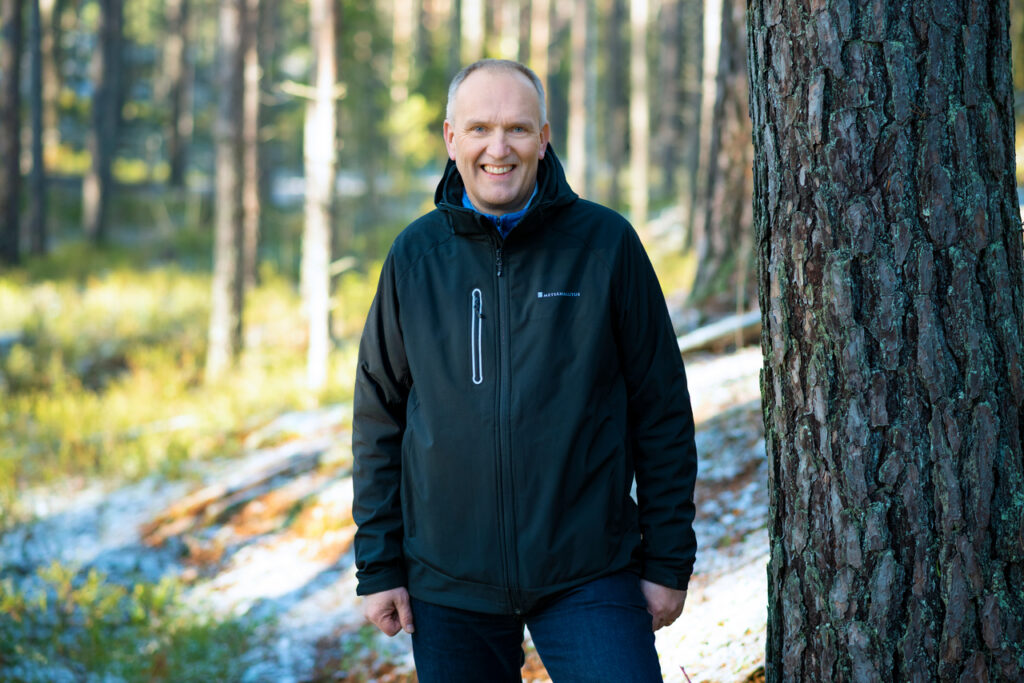Metsähallitus aiming for green growth
Enabling wind power is a key tool for Metsähallitus to promote green growth, sums up Director General Juha S. Niemelä in the updated Metsähallitus strategy.

In October, the Ministerial Committee on Economic Policy set the Metsähallitus ownership policy guidelines for 2024–2027. The policies concern, among others, the economic benefit derived by the State from Metsähallitus operations as well as the promotion of biodiversity and renewable energy.
Green growth has been made one of six main themes in the updated Metsähallitus strategy. The second main theme is preserving biodiversity and adapting to the impacts of climate change. The third theme relates to fostering the relationship between Finnish people and nature. Metsähallitus contributes to ensuring that every Finn has the opportunity to enjoy nature and the well-being it brings.
“We manage a third of Finland’s surface area, where forests are our traditional mandate. Forests are tied to green growth, climate, diversity and well-being. Wind power, particularly offshore wind power, will become another cornerstone in the long term,” says Director General Juha S. Niemelä, explaining the basis of Metsähallitus’ strategy.
Metsähallitus will continue to develop renewable energy projects in state-owned land and sea areas. The enterprise acts as a landlord for energy-producing companies in state-owned areas and can also participate in the development of projects together with actors. However, the role is not to produce energy, but to promote the green transition.
The development of offshore wind power is vital to the growth of Finland as a whole. It is for this reason that Metsähallitus policies have strong political support in a country that seeks growth in green investments.
“Sustainably produced energy will inevitably be needed. When it comes to offshore wind projects, we have to look forward to the 2030s, when the first projects will start producing electricity. If we want industrial investments in Finland, we need to start preparing for the production of clean electricity right now,” says Niemelä.
Metsähallitus wants to enable investments that bring about the hydrogen economy and other growth. A pioneer in the development of offshore wind power has seen a direct link between investments and electricity production. Investments lead to growth in energy production and vice versa.
Solar power growing more rapidly
In its ownership policy guidelines, Metsähallitus set a target to increase the revenue recognition from business operations to the State without increasing the harvesting volumes from EUR 125 million to EUR 140 million by 2028. A majority of the revenue recognition continues to come from Metsähallitus Forestry Ltd. timber trade, but the share of renewable energy is increasing rapidly. New opportunities are anticipated, for example, in the production of solar energy.
“We believe that solar power will start growing already in this decade. Solar power plants are smaller than offshore wind farms, and they’re less visible from a distance. They are more easily accepted by surrounding communities,” Niemelä says.
“We are already working on a solar power pilot project, and we’re also receiving inquiries about areas for other projects. We are happy to provide old peatland for these. However, felling commercial forests for this purpose is not sustainable,” explains Metsähallitus.
Structures being streamlined in Finland
Sweden has recently rejected EEZ projects on security grounds. Niemelä estimates that the same risks will also be assessed for many other projects located in the Baltic Sea.
From a market perspective, Finland offers a stable political environment. Its NATO membership also serves as a solid foundation. Pack ice poses its own challenges, but these can be tackled.
“In Finland, our starting point is market conformity. We’ve already launched development of licensing systems in our country, with one licensing agency on the way. The property taxation of offshore wind power must be brought in line with that for onshore wind power, something which is included in the Government Programme of the current Government and the previous one, as well. The security of the main grid connection would be one of the biggest incentives for investors,” he says.
Becoming more of an energy provider
The development of major offshore wind power projects, competitive tendering and launching projects together with investor partners requires cooperation. Its involvement in building the future and working in such a multifaceted field of operation will keep Metsähallitus an interesting employer that is well able to supplement its group of experts.
“Metsähallitus will become more of an energy provider in the future. The share of offshore and onshore wind power will increase. We’ve been supplying forest biomass for a long time. There is also talk about seabed minerals, which is interesting in terms of developing the mineral self-sufficiency of the EU.”
“Metsähallitus has unparalleled experience in coordinating the needs of its stakeholders. Our entire operation is based on the use of natural resources and steered by sustainability. We also manage other things involving sustainability: national parks, biodiversity, and hiking opportunities. We want Finland to have what it takes to achieve green growth so that we can share the common good with present and future generations,” says Juha S. Niemelä, Director General of Metsähallitus.